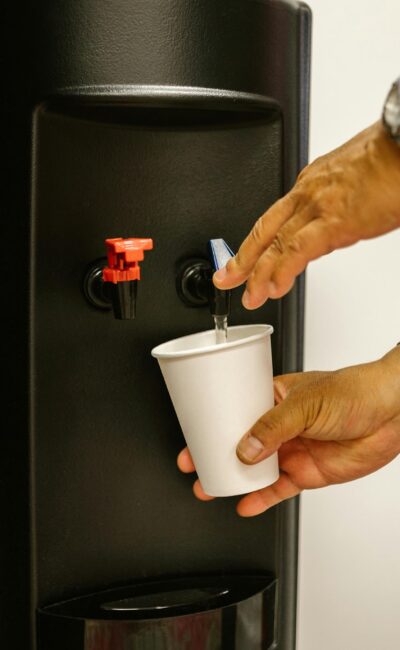OAKLAND — After years of public outcry and the discovery of dozens of lead-tainted drinking water taps throughout the city’s public schools, Oakland Unified has tested every single drinking water tap at its schools, and is fixing or replacing those with dangerous lead levels.
Charles Smith, director of Oakland Unified’s Buildings and Grounds department, said at a news conference Tuesday that more than 2,000 water fountains have been tested for lead contamination of more than five parts per billion throughout the district following the adoption of the “Clean Drinking Water Policy” in early 2018. The East Bay Municipal Utility District has been conducting a second round of testing on the taps.
The policy called for taps that showed lead levels higher than five parts per billion to be taken out of commission until they are either fixed or replaced. In all cases, Smith said, it’s been the fixtures and not the pipes that are the cause of the contamination.
“Today we can safely say that the lead in water issue at Oakland Unified School District has been mitigated, and we are working and striving on a continual basis to make sure our children are safe and have clean drinking water,” Smith said.
Water quality at Oakland Unified schools prompted public scrutiny in 2016, when water samples taken from 103-year-old McClymonds High School in West Oakland showed high levels of lead. The following year, Oakland Unified started testing the water quality at all its public schools as well as child development centers and some charter schools, and found more taps with high lead levels.
From September 2017 to March 2018, 22 schools in addition to McClymonds were found to have at least one tap with lead levels above 15 parts per billion — the federal and state threshold for what’s dangerous for children. The American Academy of Pediatrics has deemed fixtures with lead levels higher than one part per billion to be dangerous to children.
Lead is particularly dangerous to children, according to the United States Environmental Protection Agency, since their bodies are growing. Their brains and nervous systems are also more sensitive to the effects of lead.
Test results posted on the district’s website show that dozens of schools were found to have taps with dangerously high lead levels. Though some of those taps had been fixed or replaced, the data on the district’s website indicated that most were just taken out of commission. The results posted on the website appear to not have been updated in the past year.
Emily Rusch, executive director of the consumer group CalPIRG, said in an interview that she urges the district to make more up-to-date information available to parents, so that they “have accurate information about what’s being done at their child’s school.”
Rusch also urges district officials to revisit their water quality policies — as they said they would this year — and consider lowering the threshold considered dangerous to one part per billion, as some other school districts have done.
In addition to fixing or replacing contaminated water fixtures, the district has also ordered new FloWater water bottle refill stations at all 86 district schools. The refill stations extract up to 99.9 percent of all “contaminants and harsh chemicals, including lead and chromium 6” from any potable water line, according to an Oakland Unified news release.
The stations have been installed in 72 schools, and by mid-May they will be installed at all of the schools. The city gave Oakland Unified $371,000 to purchase the stations with money generated from the one-cent-per-ounce soda tax passed by voters in 2016. Alameda County supervisor Wilma Chan also allocated $100,000 of discretionary funds to cover the remainder of the $471,000 cost to buy the water bottle refill stations.
Brita, in 2018, donated 12 water bottle refill stations for 10 schools.
Larry Brooks, director of the Alameda County Healthy Homes Department, said the department has never come across a lead exposure case that could be traced back to Oakland schools. Still, he said, Oakland Unified set a good example for other districts on how to take preventative measures.
“This school district became proactive, got ahead of the curve, adopted water sampling policies, tested fountains, took those offline that might have hazards and utilized devices like (the FloWater stations) in order to ensure that our kids are going to be drinking clearly safe water so that we won’t have to ever find a source of lead in our children,” Brooks said.
Read the original article here.





